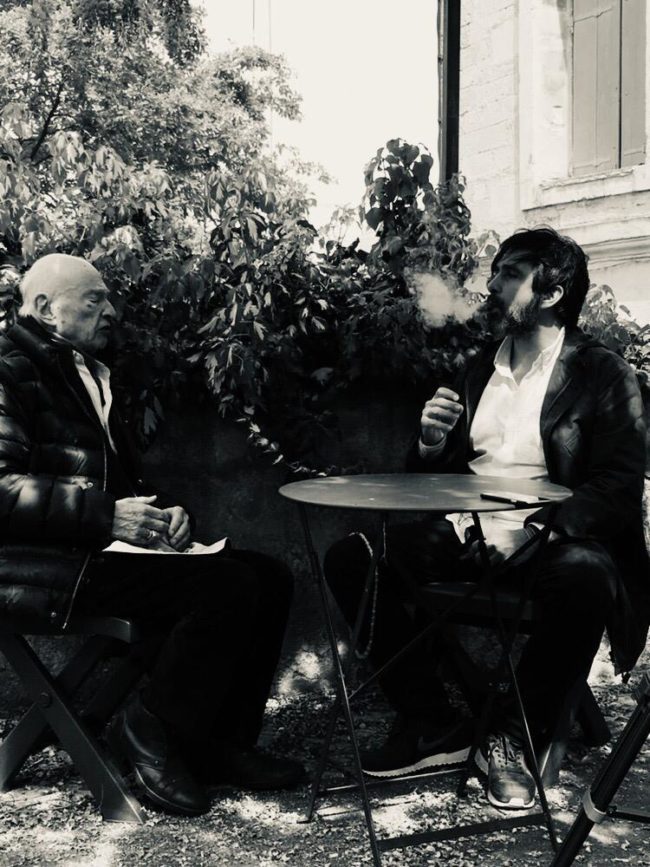The question «What is shamanism?» always necessarily solicits a personal answer, a parable springing from the bowel of the elemental nature of an experience. It is the same case question with sexual education. Just as there is no possible direct description of the matter of shamanism, there is no such thing as sexual education, beyond the description of the mechanics of intercourse and the prevention of pregnancy or venereal deceases; all else is basically non paraphraseable, like the poem. Osip Mandelstam wrote: « where there is amenability to paraphrase, where the sheets have not been rumpled, there poetry, so to speak has not spent the night.” And like the poem or the sexual encounter, the shamanic event skids endlessly between rhythm and meaning, between pattern and noise, between radical immanence and untranslatable Truth, between the Singular and the Universal, between the metaphor and the form. A roadmap focusing on the material aspect of the field of sexuality is in fact related to lived sexuality in the same way that a telephone number is related to its registered user. Erotic encyclopedias, manuals of fetishes and bondages are all useless attempts as well to reach the radically immaterial matter of the event of an encounter with sexuality. Where is the bottom line of the poem to be found? In the experience of the poem, which is bottomless.
Reaching a philosophy of shamanism is not an inconceivable task but there are dynamics to point towards a place of the philosophical word that tries to name the immaterial Being, the folds and cracks in consensual reality. How to reach a philosophy then?
The foundational stone in a shamanic event is linked to touch, one is touched, let’s say that the realm of what is not there (because it is in the past of in the elsewhere, or even beyond these parameters) makes its appearance, like the touch of a feather. Touch is the most direct sense. Then comes the second movement: the act of paying attention to that which touched us, something akin to the sense of hearing. This may be called gnosis. After that comes an action in time-space: the word, the image, the song, the ritual dance, ART in its full bodied expression. We may call this Sacred Magic: the Universal Will, which is nowhere to be found, other than in its reflections, is channeled into the now and the here. Shamanism may be distinguished from sorcery in this place: the act of opening the field of « let Thy will be done » by the contingent medium of Universal forces –the shaman -; the setting forth, by way of techniques, of the momentum and inertia of the Universe is entirely different from the formula « let my will be done » of the sorcerer. Momentum and inertia can only be channeled with a certain knowledge of « how to pray ». If the practicing « shaman » doesn’t possess the knowledge of how to plant the seed, so to speak, he cannot expect the inertia and momentum of the Universe to make anything grow from it. A shaman cannot claim a healing procedure as his or hers, in the same way that a farmer cannot claim he grew the potatoes that he is now harvesting. Universal momentum and inertia, set forth in the action of planting (which is analogical to prayer) has made the potatoes grow.
The fourth movement, beyond the “science of miracles” is precisely the one linked to “a philosophy”. A synthesis of the three other movements which lands in the « word of philosophy » entails that it always remain inextricably linked to the other three movements, in a constant dynamics. Otherwise it will remain absorbed in its own matter and will become inevitably self-hypnosis or possession: the possession of a “system of ideas” which envelops the mind and forecloses the “poverty of opinions” that is the sine qua non of experience-driven thought. Likewise for the mystical experience, which divorced from the other three will become addictive reverie; or gnosis which will become the barren science of the occult. Lastly the science of miracles that we have called sacred magic will become mere sorcery at the service of the will of domination if unlinked to the toroidal dynamic of the four.
Sheldrake material immaterial science
Narby, Viveiros de Castro Agamben. Becoming the Other, being what we aren’t, and therefore are.
Mamo Lorenzo, Reinaldo. From cosmovision to cosmoexperience
Bucher. The teachings of Taita Fernando
Muisca. The riddle of the ritual practices
Anselm Animism, a conversation
Noise, Singularity, apophenia, algorhythm, numbers. Badiou, Bernardo, Carl Sagan
Jacobo Grinberg, neurophysiology experiments, descriptions of shamanic practices.
Tobey Nathan. Djinn
Taussig mimesis and alterity
Terence and Dennis Mckennah, the Experiment at La Chorrera
